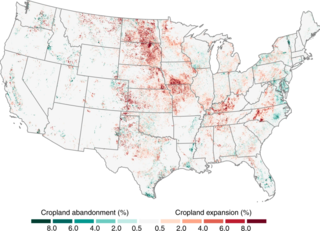Cropland expansion in the United States produces marginal yields at high costs to wildlife
T. Lark et al. “Cropland expansion in the United States produces marginal yields at high costs to wildlife” Nature Communications 11, 4295 (2020) [DOI: 10.1038/s41467-020-18045-z]
Recent expansion of croplands in the United States has caused widespread conversion of grasslands and other ecosystems with largely unknown consequences for agricultural production and the environment. Here we assess annual land use change 2008–16 and its impacts on crop yields and wildlife habitat. We find that croplands have expanded at a rate of over one million acres per year, and that 69.5% of new cropland areas produced yields below the national average, with a mean yield deficit of 6.5%. Observed conversion infringed upon high-quality habitat that, relative to unconverted land, had provided over three times higher milkweed stem densities in the Monarch butterfly Midwest summer breeding range and 37% more nesting opportunities per acre for waterfowl in the Prairie Pothole Region of the Northern Great Plains. Our findings demonstrate a pervasive pattern of encroachment into areas that are increasingly marginal for production, but highly significant for wildlife, and suggest that such tradeoffs may be further amplified by future cropland expansion.
More information on this project can be found in highlights by GLBRC and the University of Wisconsin- Madison.
Maps of cropland conversion classes, year of conversion, and pre- and post-conversion land cover associated with Lark et al. (2020) can be found on Zenodo. This repository also includes maps of 'local' and 'national' yield differentials for corn, soybeans, and wheat that are associated with the same publication. Code used to generate these data can be found here.
